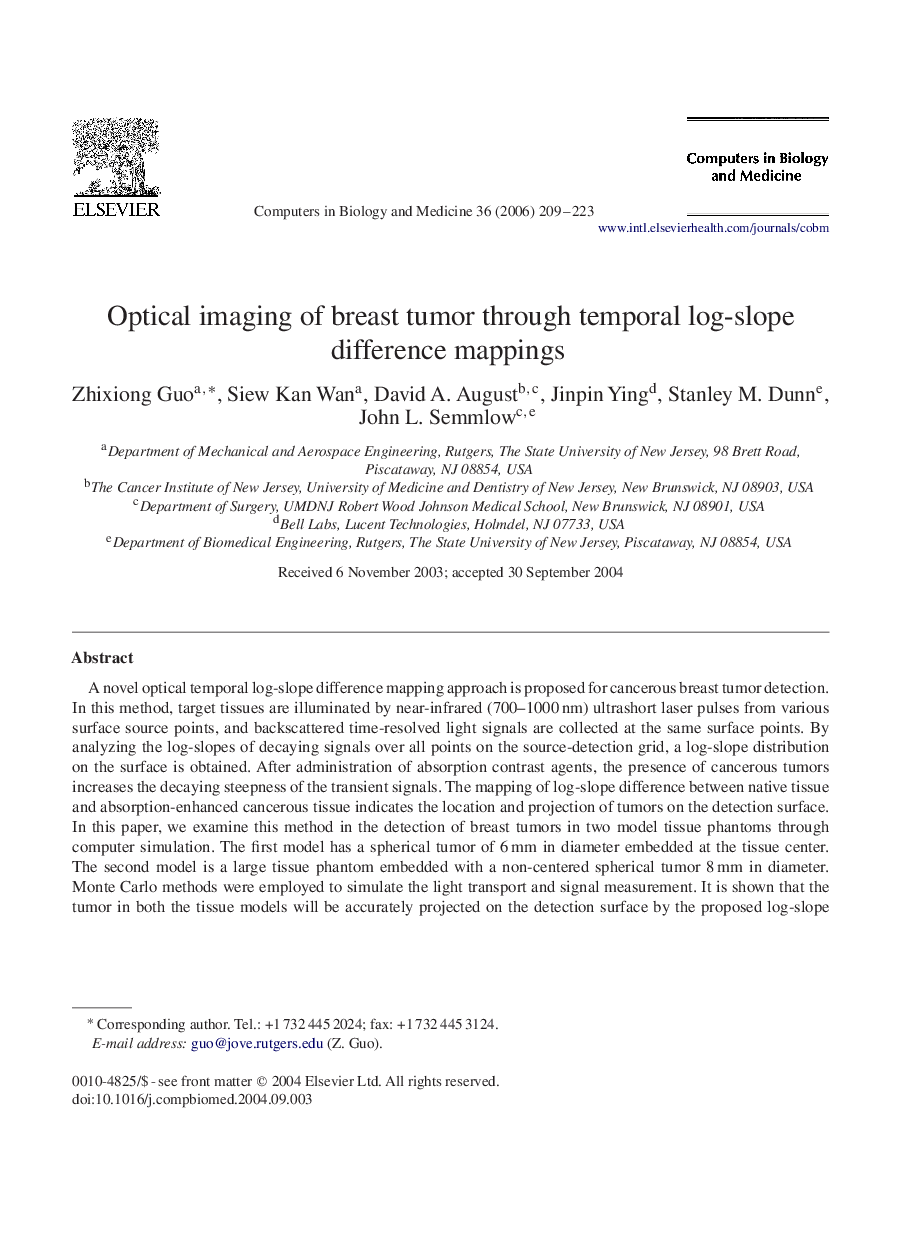| Article ID | Journal | Published Year | Pages | File Type |
|---|---|---|---|---|
| 506144 | Computers in Biology and Medicine | 2006 | 15 Pages |
Abstract
A novel optical temporal log-slope difference mapping approach is proposed for cancerous breast tumor detection. In this method, target tissues are illuminated by near-infrared (700-1000Â nm) ultrashort laser pulses from various surface source points, and backscattered time-resolved light signals are collected at the same surface points. By analyzing the log-slopes of decaying signals over all points on the source-detection grid, a log-slope distribution on the surface is obtained. After administration of absorption contrast agents, the presence of cancerous tumors increases the decaying steepness of the transient signals. The mapping of log-slope difference between native tissue and absorption-enhanced cancerous tissue indicates the location and projection of tumors on the detection surface. In this paper, we examine this method in the detection of breast tumors in two model tissue phantoms through computer simulation. The first model has a spherical tumor of 6Â mm in diameter embedded at the tissue center. The second model is a large tissue phantom embedded with a non-centered spherical tumor 8Â mm in diameter. Monte Carlo methods were employed to simulate the light transport and signal measurement. It is shown that the tumor in both the tissue models will be accurately projected on the detection surface by the proposed log-slope difference mapping method. The image processing is very fast and does not require any inverse optimization in image reconstruction.
Related Topics
Physical Sciences and Engineering
Computer Science
Computer Science Applications
Authors
Zhixiong Guo, Siew Kan Wan, David A. August, Jinpin Ying, Stanley M. Dunn, John L. Semmlow,
